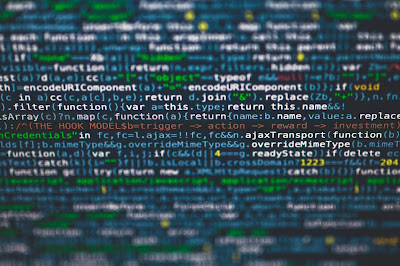Programming Languages
01001000 01100101 01101100 01101100 01101111 00100000 01010111 01101111 01110010 01101100 01100100 00100001 (Hello World!)
Today I want to talk about programming languages. A computer understands the language of binary, this is called machine language and is represented by a series of bits of ones or zeros, signifying on or off . This low-level programming language instructs a computer to complete a particular set of tasks through long lines of those zeros and ones. This relegated developers to a small group that could write in this machine language. For development to grow and mature there needed to be something on the other end of the spectrum, a high-level programming language. A high-level programming language is defined as something that is more human-like, or representative of human language, and it requires fewer characters to direct the computer to do a particular task . Unlike the binary for Hello World! above at the start of this post the high-level language would allow someone to write this statement in a more human-like way and with fewer characters. One example of this is to write print(‘Hello World!’) in Python. Python will compile or using an interpreter will change those commands to the machine language to get a computer or device to act upon those commands. Python is a high-level and object-oriented language that began its development in the 1980s and was released in 1991 by Dutch programmer Guido van Rossum . A highly configurable, powerful, and extendable language it has become a favorite of developers due “ in part to being easy to learn, to being freely available, and to having powerful high-level data-processing operations.” .
Programming languages are defined by their syntax and semantics, such as how the symbols, words, numbers, and punctuation works . From my own personal experience when you understand how to develop in one language then learning a new or different language is fairly straightforward. You are not learning how to code or develop, but instead, you are learning how the other language does it differently.In today’s modern computers the languages and the tools to write in them have become widely available for anyone to learn. A person can write a small program as a script and utilizing the web browser to run it, or the program can be compiled to run later. These programs can interface with all of the devices from a standard computer, Internet of Things (IoT) technologies, smartphone technologies, or anything else in the entire run of technology. If someone needs software that is not developed yet they can build it themselves. In a platform like Salesforce, there are several programming language technologies that can be applied from Apex to SOQL (Salesforce Object Query Language), and utilizing these languages the functionality of Salesforce can be far extended to meet the needs of today’s businesses.
Programming languages can directly interface with databases and even handle the management of the database itself. The languages can be run across networks and communicate with technologies all across the globe. There can be trouble with them however as these languages can interface with so many technologies that unless the network is secured, permissions are correctly set on the resources, or properly managed from testing and debugging, that there could be permanent damage done to all of these resources that can be interfaced with. A program could be written to drop an entire database from a server, or a program could be written to redirect traffic from a website to another location for purposes of larceny, embezzlement, and false pretenses.
It is going to be important to build and consider security in every step of the development of applications and programs with these programming languages to ensure not only that it cannot be used for crime but to also run and behave as it should.
References
Harmon, A. (2020). Machine Code. In Salem Press Encyclopedia of Science. https://search-ebscohost-com.proxy-library.ashford.edu/login.aspx?direct=true&db=ers&AN=87998920&site=eds-live&scope=site
Kte’pi, B. (2020). Python (programming language). In Salem Press Encyclopedia of Science. https://search-ebscohost-com.proxy-library.ashford.edu/login.aspx?direct=true&db=ers&AN=113931300&site=eds-live&scope=site
Python. (n.d.). Python. Retrieved March 8, 2021, from https://www.python.org/
Vahid, F., & Lysecky, S. (2017). Computing technology for all. zybooks.zyante.com/
Valentino, M., MSLIS. (2018). Programming Languages. In Salem Press Encyclopedia of Science. https://search-ebscohost-com.proxy-library.ashford.edu/login.aspx?direct=true&db=ers&AN=127890462&site=eds-live&scope=site


Comments
Post a Comment